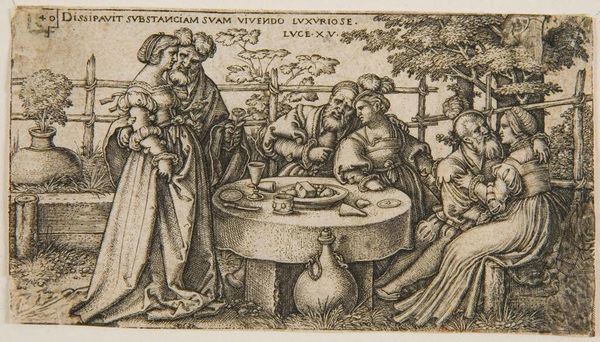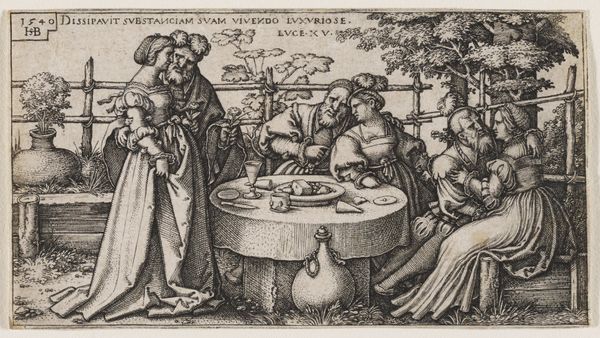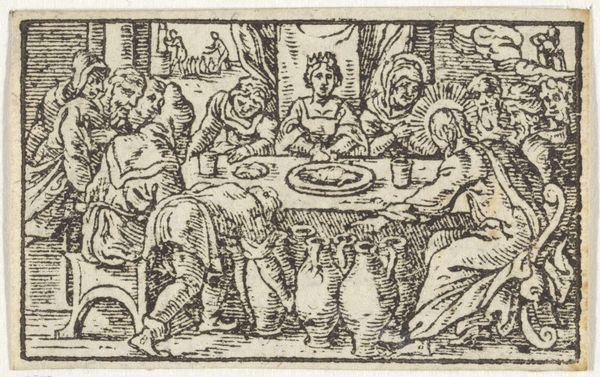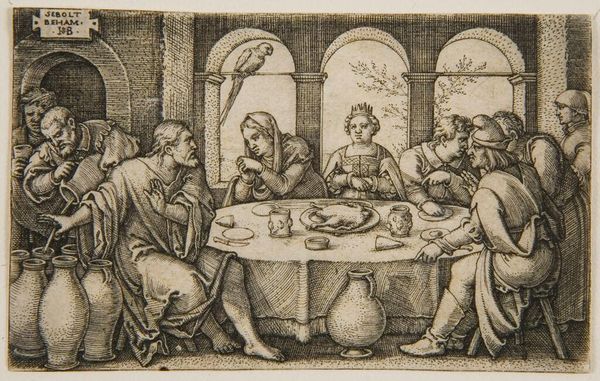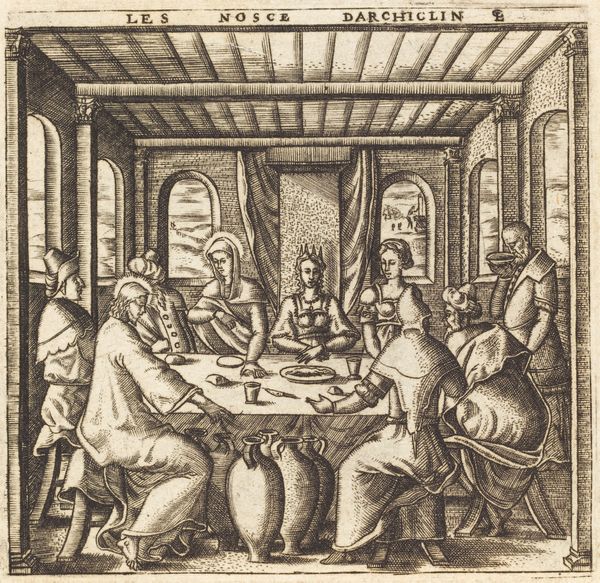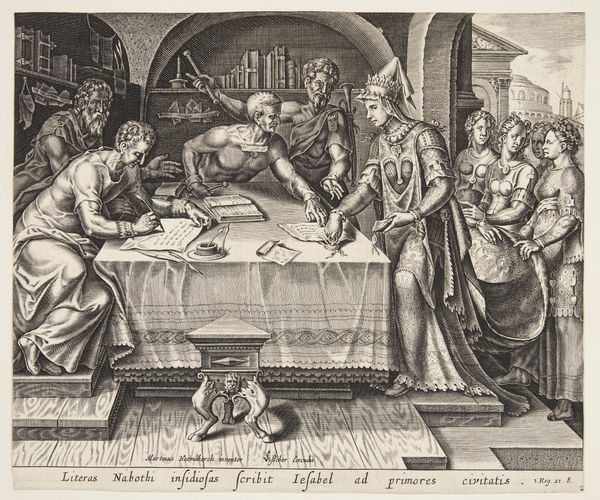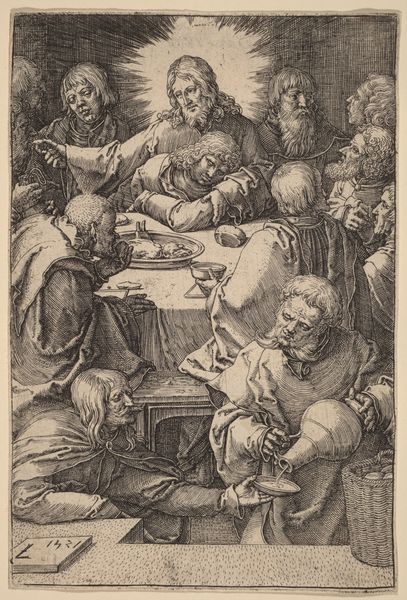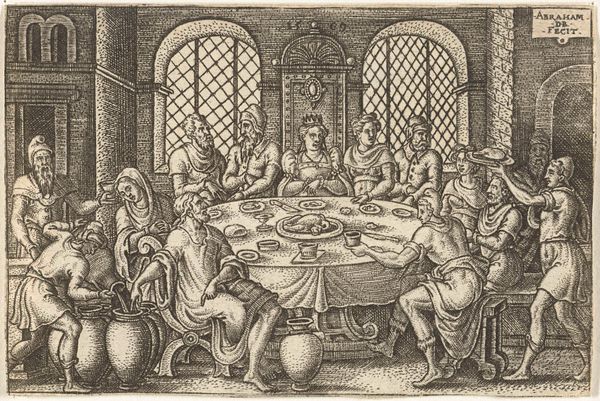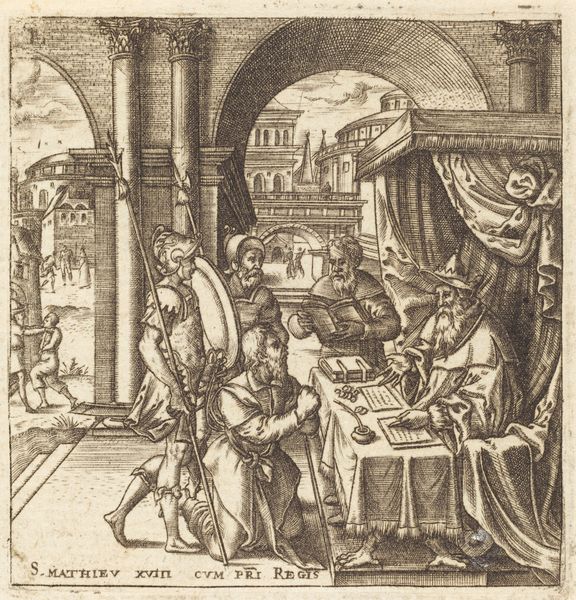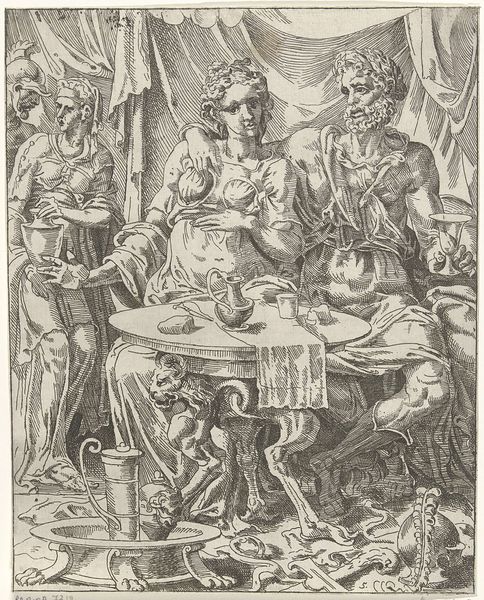
The Prodigal Son Wasting his Fortune, plate two from The History of the Prodigal Son 1540
0:00
0:00
drawing, print, paper, engraving
#
drawing
#
narrative-art
#
pen drawing
# print
#
paper
#
genre-painting
#
history-painting
#
northern-renaissance
#
engraving
Dimensions: 49 × 91 mm (image/plate); 50 × 92 mm (sheet)
Copyright: Public Domain
Sebald Beham created this engraving, "The Prodigal Son Wasting his Fortune," around 1540 by cutting lines into a metal plate, inking it, and pressing it onto paper. It is not necessarily high art, but a readily reproducible image. Look closely, and you'll see that the figures in the foreground are etched with a network of fine lines. Beham used a tool called a burin to carve these lines into the copper, controlling depth and thickness to create shading and texture. Notice the contrast between light and shadow, which gives the scene depth and volume. This technique allows for intricate details, such as the folds in the clothing and the expressions on the faces of the figures. Printed images like this had wide circulation in the 16th century. This allowed the moral of the depicted story to be easily disseminated, while also encouraging the development of a visual culture driven by reproducibility. In this way, the prints themselves became a commodity, sold at markets and fairs like any other product of labor.
Comments
No comments
Be the first to comment and join the conversation on the ultimate creative platform.
